
As it is supposed, this picture belonged to a series consisting of 9 parts. Since the middle of the XV century, at the courts of the Middle Italian rulers, the image of the Muses became fashionable. Among these images, the already mentioned cycle, created by the order of the Duke of Lionello d’Este for the studio of his palace Belfior, is perhaps the most significant and decisive depiction of the muses in the future. The fine connoisseur of the Italian Renaissance, Derdi Gombosi, has established that the muse is depicted in both Budapest paintings.
Unknown Ferrarian artist of the XV century produced engravings with mythological figures for torokovyh maps. The basis of the composition of our paintings was the corresponding parts of this series. Behind Euterpe, towering on the pedestal in an elegant and restrained pose, in the background is a desert landscape, indicating the influence of Piero della Francesca.
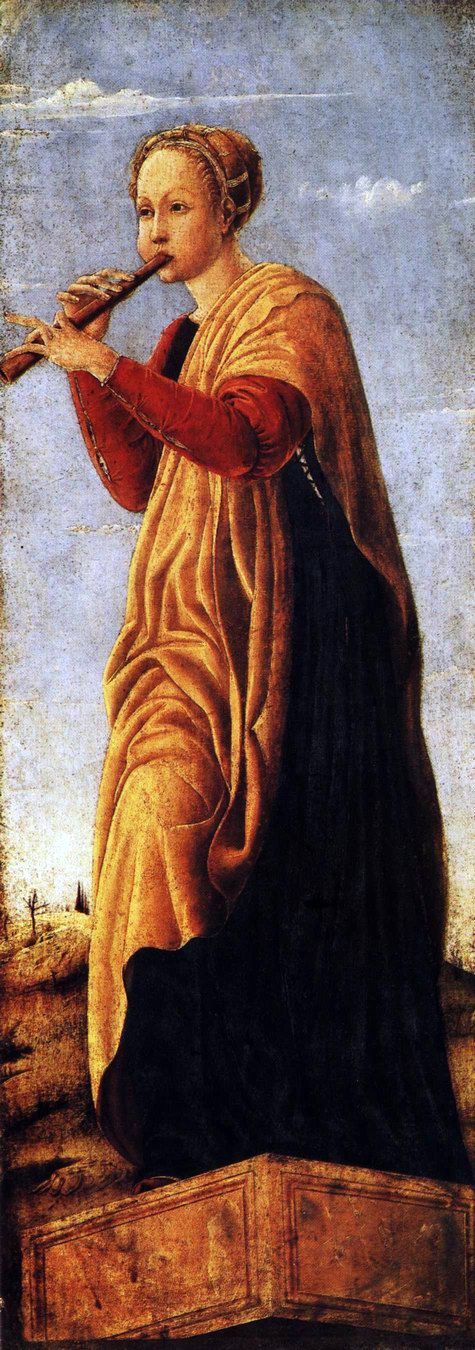 Muse Euterpe – Francesco del Cossa
Muse Euterpe – Francesco del Cossa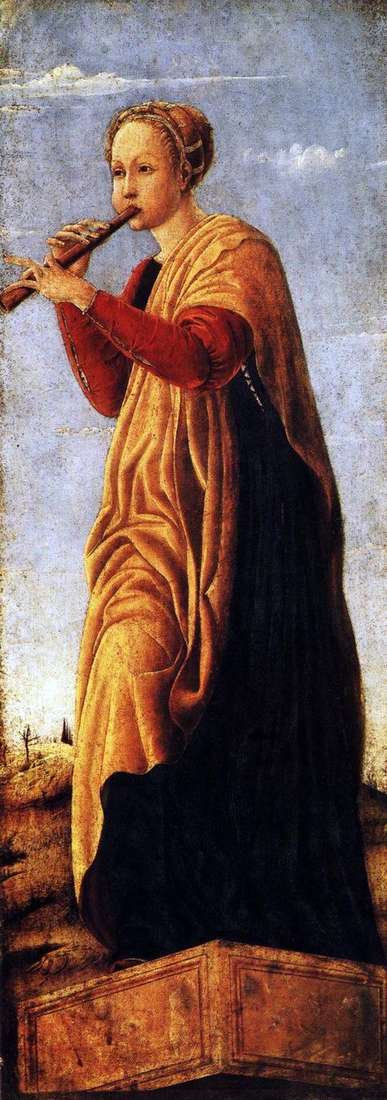 Muse Euterpe – Francesco del Cossa
Muse Euterpe – Francesco del Cossa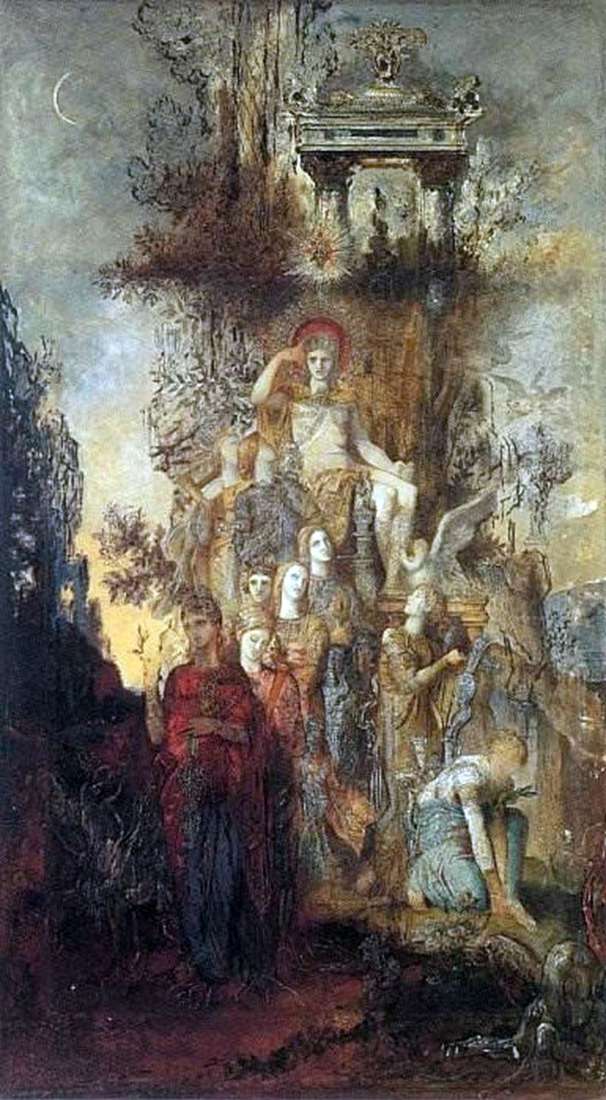 Muse, leaving his father Apollo by Gustave Moreau
Muse, leaving his father Apollo by Gustave Moreau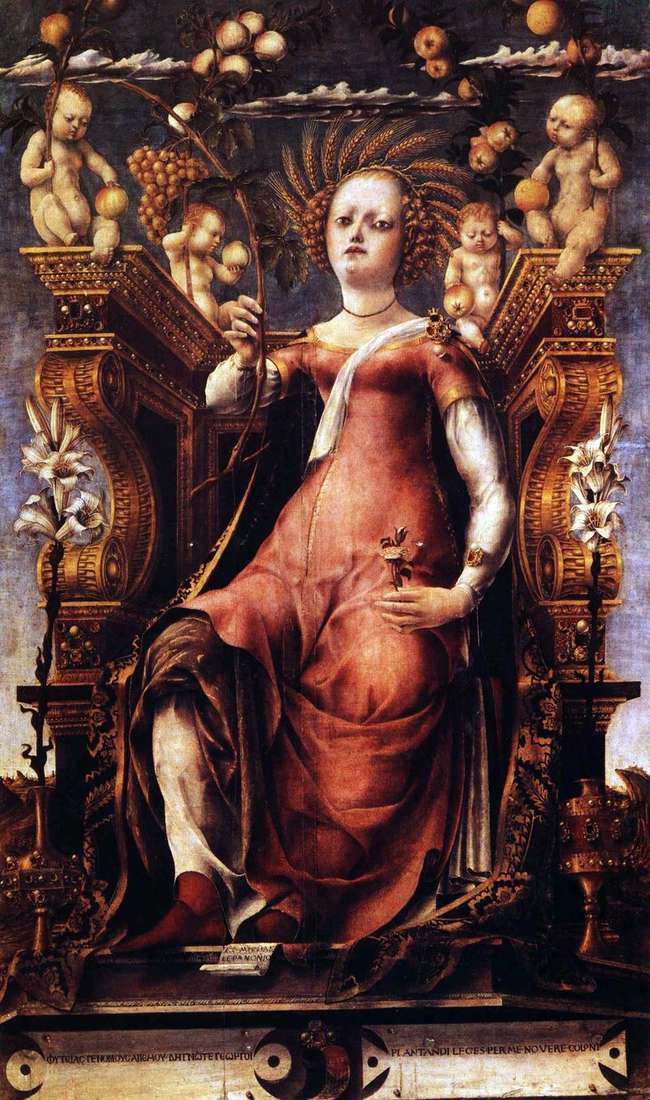 Muse Talia by Michele da Pannonio
Muse Talia by Michele da Pannonio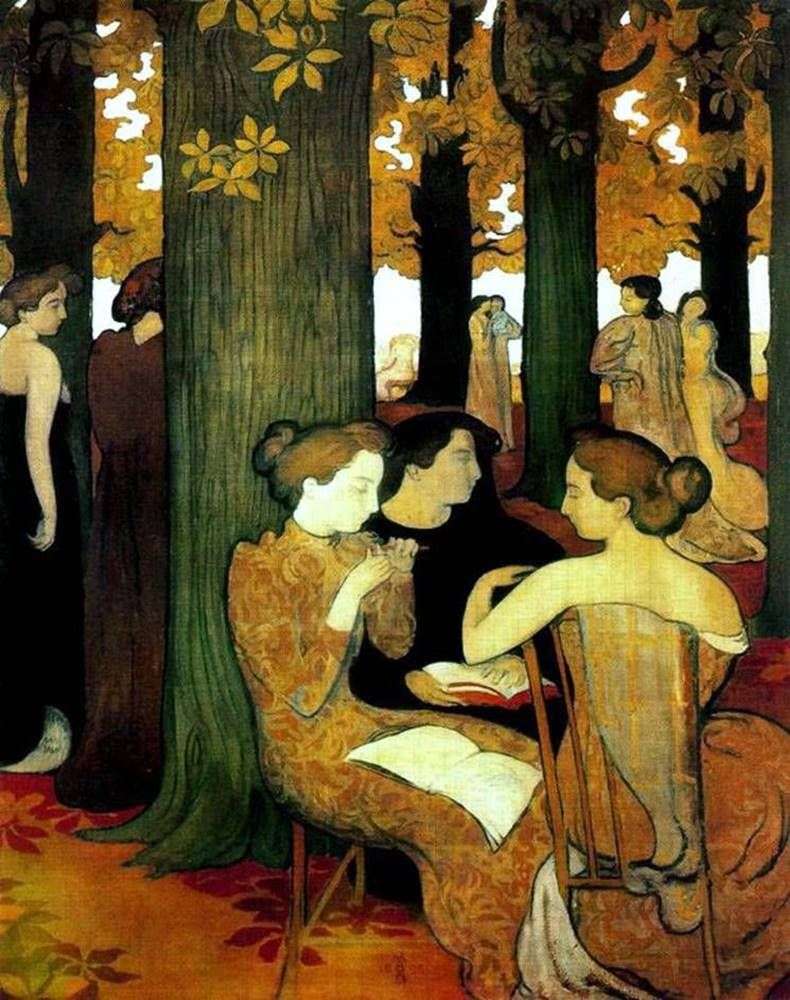 Muse in the sacred grove by Maurice Denis
Muse in the sacred grove by Maurice Denis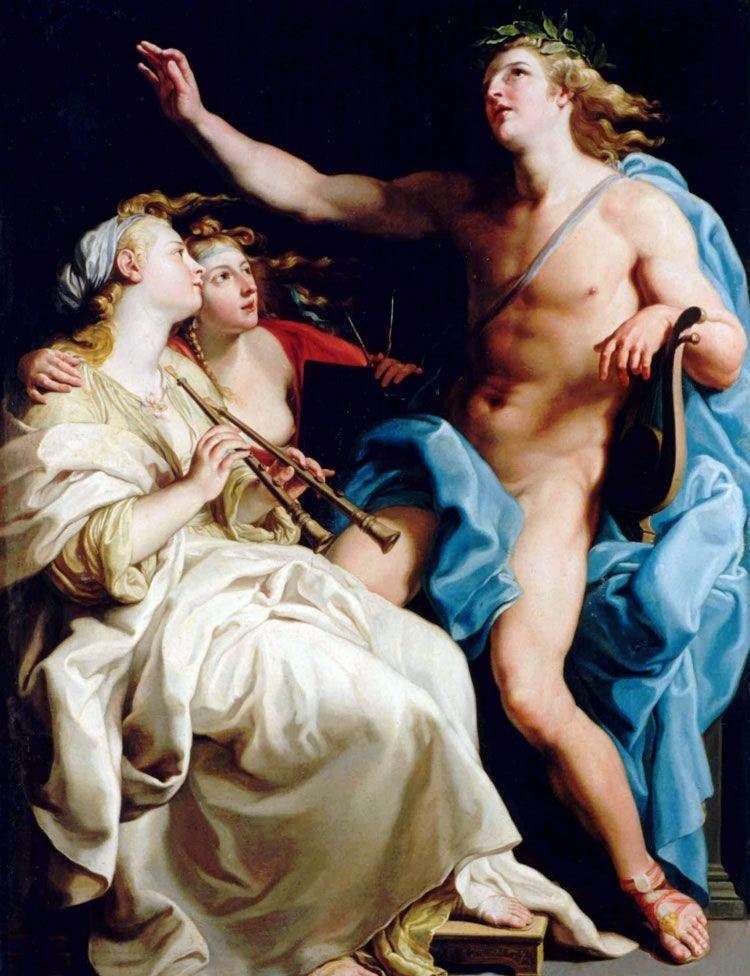 Apollo and two muse by Pompeo Batoni
Apollo and two muse by Pompeo Batoni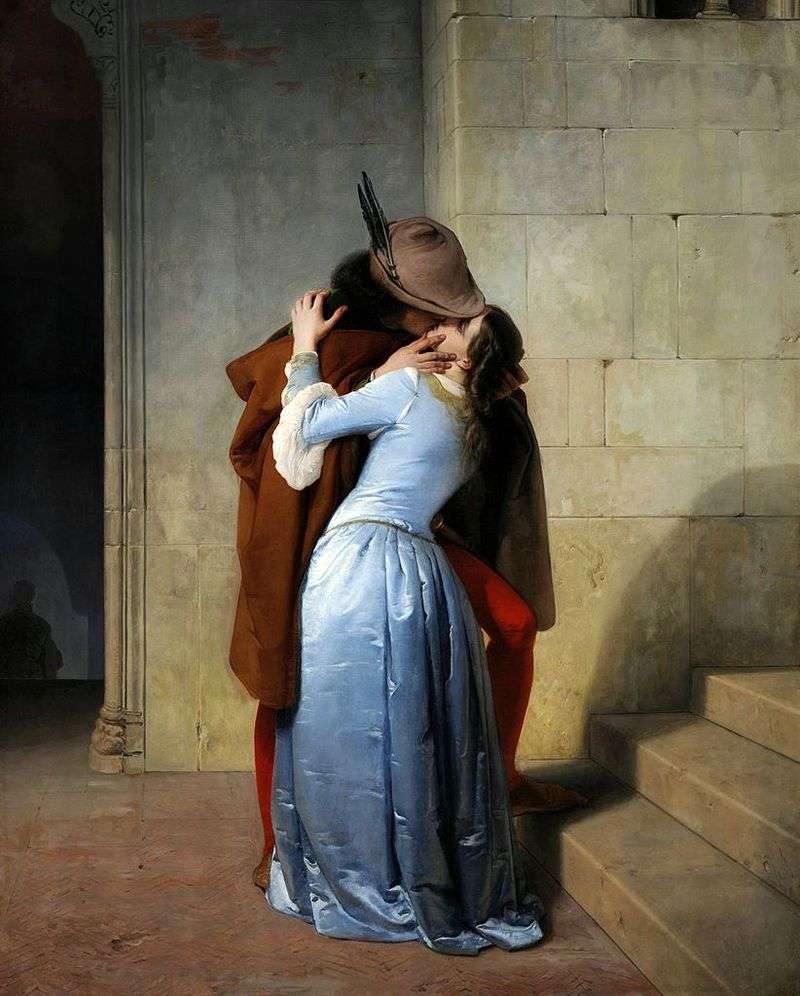 The Kiss by Francesco Ayets
The Kiss by Francesco Ayets Turkish slave by Francesco Parmigianino
Turkish slave by Francesco Parmigianino